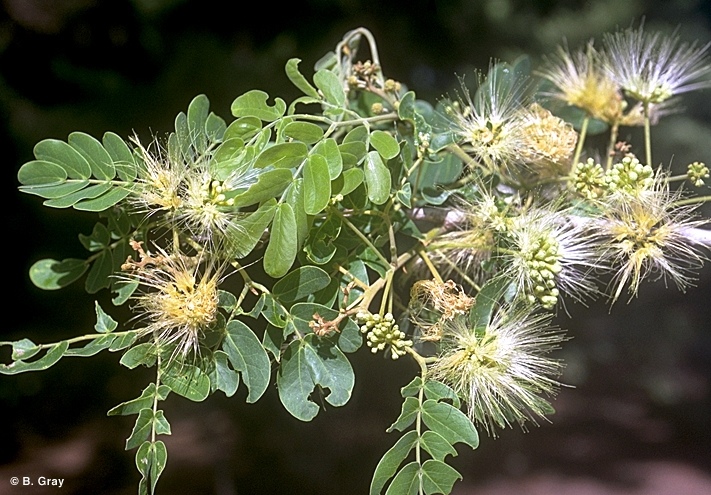Australian Tropical Rainforest Plants - Online edition
Albizia lebbeck (L.) Benth.




Bentham, G. (1844) Hooker's London Journal of Botany 3 : 87.
Siris; Siris Tree; Powder-puff Tree; Lebbek; Indian Siris; Broome Rain Tree; Albizzia; Woman's Tongue Tree; Lebbeck
Blaze odour resembles beans (Phaseolus vulgaris) to some extent. Lenticels large and untidy in appearance.
Leaflet stalks very short, about 1 mm. Leaflet blades about 25-40 x 10-20 mm. Slightly raised glands normally present on the upper side of the compound leaf petiole, not far from the base and also on the secondary axes between most pairs of leaflets. Glands may sometimes also occur towards the base of the secondary axes.
Peduncles about 4-5 cm long. Flowers pedicellate, pedicels about 4-5 mm long. Staminal filaments about 15-20 mm long.
Cotyledons fleshy, about 3-5 veins radiate from the petiole, visible on the underside only. First pair of leaves dimorphic; one leaf pinnate, the other bipinnate. At the tenth leaf stage: more than 20 leaflets in each compound leaf; leaflet blades about 5-11 mm wide; main axis of the compound leaf with a few pale hairs; glands occur 2/3 of the way along the compound leaf petiole and also at the junction of the secondary axes and the primary axis of the compound leaf; stipules linear-triangular, about 3-4 mm long, glabrous. Seed germination time 6 to 19 days.
Occurs in WA, NT, CYP, NEQ, CEQ and south to south-eastern Queensland. Altitudinal range from near sea level to 500 m. Grows in monsoon forest and the drier, more seasonal rain forests. Widely cultivated, but the cultivated form was probably imported from Asia. Also occurs in Asia and Malesia. As time goes by it will become increasingly difficult to determine whether particular specimens come from the local form or from the naturalised introduced form.
Food plant for the larval stages of the Common Grass Yellow Butterfly. Common & Waterhouse (1981). Widely planted as street trees in tropical Australia. These plantings probably all from seed outside Australia. Trees become leafless in spring and early summer when in fruit. This species has been used medicinally in India and South-East Asia. Cribb (1981).





